|
Poison ivy, Toxicodendron radicans, is native to eastern North America from Canada to Florida, and as far west as Arizona, occurring naturally in fields, woodlots and fencerows. Plants form a sweeping ground cover up to two feet tall, and at the first opportunity, begin to climb by clinging to tree bark, buildings or posts.
All parts of the plants are laced with urushiol oil, a potent substance that causes the rash that instantly comes to mind when we think of poison ivy. The oil is sneaky. We brush against the leaves, pull a few as weeds and feel no sting or irritation. The urushiol binds to skin within 10-15 minutes of exposure, and over the course of hours, days or even a week two, our system kicks in with the classic itchy, weeping rash. If we realize that we’ve been exposed, we can rush to wash thoroughly to remove the oil before it soaks in. Other times, we are completely unaware. Many times the family pet is the vector, returning from a romp in the backyard with just enough urushiol on their fur to cause a reaction to the owner who later pets them. About 10 or 15% of the population is not sensitive to the oil and will never have a reaction. But if you’ve never had poison ivy, don’t be too quick to assume you are immune. It all depends on how much exposure you may have had over the years—everyone has a different threshold, and it is difficult to know how much direct contact you may have had. It seems that only humans are sensitive to urushiol. Wildlife and pets can coexist without a reaction. Birds enjoy the plant’s white berries, and grazing animals eat the nutritious foliage with no ill effects. Poison ivy is a tough plant, with deep roots and reserves. Even specially formulated herbicides labeled for poison ivy usually require multiple applications to completely kill the plants. To add insult to injury, the dead stems and leaves are just as full of the toxic urushiol as when lush and green—and this includes the top growth that dies back in the fall—there is no ‘safe’ season to handle these plants. The roots are loaded too, so beware if you try to dig them up. And don’t even think about burning it, dead or alive. Breathing the resulting smoke, soot and ash can result in a horrible reaction. So, what to do? If I spot a seedling or small plant in the garden, I put on disposable vinyl gloves and slip a plastic grocery bag over one. Grasp the plant firmly at its base and pull up with the roots, then carefully pull the bag back over my hand to wrap the ivy. Recently, however, we discovered an enormous patch in our field while mowing a walking path. We weighed the options, and finally settled on an unconventional solution. Goats. We procured a portable electric fence and a pair of discount goats—older animals that had little to offer beside their appetite. They are happy to browse with no supplemental feeding, and have been at work since early July, eating poison ivy, goldenrod and any pasture grass within their reach. So far, so good. Even eaten to the ground, the ivy will resprout—but the bulk of the top growth will be gone, and any returning growth can be hit with herbicide without leaving a lot of dead mass to deal with. We’re hoping this approach will control, if not eliminate the ivy problem. I’ll keep you posted.
64 Comments
Thistles are not welcome in most gardens. Bold, tall, and very spiny bull thistles are quite literally painful to remove. Canada thistles are prickly and very persistent, seeming to come back tenfold from every attempt to pull them.
There are, however, thistles that add beauty, form and even food to the garden. Artichokes (Cynara cardunculus var. scolymus) are bold foliage plants with enormous thistle blooms that are harvested before they open. Like the familiar weed thistles, artichoke blooms are hidden in the center of a swollen base protected by thick green bracts that overlap like fish scales, crowned with a tuft with hundreds of rolled purple petals. The edible portions are the hearts and the ‘petals’ –soft flesh inside those thick bracts. The part that would unfold into a showy flower is inedible, the ‘choke’ that lies at the center below the heart. By nature artichokes are biennials, flowering in the second year of life. Since they are not cold hardy to Michigan, typical forms are not suitable for our gardens. Hybrids such as Green Globe flower in their first year of life, and will produce edible crops for us. An artichoke relative is cardoon (Cynara cardunculus), whose leaves are bold, coarse and silvery. New shoots are edible and have a flavor like, not surprisingly, an artichoke. More often, they are grown as an ornamental plant for their fabulous leaves. Though hardy only to USDA zone 7 (0 degrees F), I have had them survive a mild winter with good snow cover. The foliage is less of a neat fountain in the plant’s second year, but the flowers are quite dramatic. A more common ornamental is the globe thistle, Echinops. Leaves resemble thistles, but are not so prickly. Blooms are perfectly round balls of silvery blue flowers; an interesting contrast to the otherwise coarse plants. They reach three to four feet tall, and bloom from July to September. Full sun is ideal but they will perform well in as few as six hours. Globe thistle is not fussy about soil type, deer and rabbits do not like the leaves, but butterflies adore the flowers. An assortment of varieties offers flowers in shades of blue and a range of heights. Arctic Glow provides a unique variation, with silvery white flower globes and contrasting burgundy stems. Sea holly, or Eryngium, offers a wide range of foliage forms and flowers for the garden. I have had the best success with Eryngium planum, whose rosette of rounded leaves is not so thistly. The flowers, however, are a dense dome of steel blue, resting on a spiny base. I have tried some of the species with bold, spiny, silver-netted leaves with flowers resting atop bracts as flashy as a poinsettia. So far the biennial types like Mrs. Wilmott’s Ghost have not flowered for me. More reserved species have failed to come back for that second, flowering season. But I will keep trying. I have had good luck with another thistle that seems to be available mostly as seed. This is the Scotch thistle, Ondopordum acanthium. The flowers are typical thistles, small, and not so showy. Foliage, however, is very dramatic. Leaves are broad, flat and almost white. Stems are winged, with ridges of the same silvery white. Plants are tall, six to eight feet, and make a bold, architectural statement. Plants are biennial, with a distinctive rosette of silvery foliage in their first year, and a tall, blooming form in their second year of life. Seedlings are readily recognized, so it’s easy to keep just what you want from one year to the next. Consider giving the showy thistles a chance in your garden. We’ve enjoyed the early bounty of asparagus and rhubarb, but lost the lettuce to rabbits, woodchucks and/or deer. Sugar and snap peas were hit hard, but a new fence, repellant sprays and traps gave the plants a chance to come back and we’ve enjoyed a small harvest.
Peppers were untouched by the invaders, but did not like the cool, wet start to this season. Plants are responding nicely to the recent heat but it will be a while before we are getting any fruit. Cabbage, kohlrabi and Brussels sprouts, on the other hand, thrive in cooler weather, and prompt, judicious application of Sevin dust to subdue hungry cabbage loopers has resulted in a nice looking crop. Cabbage, of course, can be harvested at any time, but we’re waiting for the heads to grow larger so we can make cabbage rolls. We’re trying okra this year, and plants are loving the heatwave, though they are still quite small since woodchucks, apparently, like the tender new leaves and shoots. I am not a big fan of eating okra, so chose to grow the more ornamental variety Burgundy. Deep red stems and red-flushed leaves are pretty enough, and the creamy yellow, hibiscus-like flowers glow against the contrast. The okra pods will be burgundy, though they turn green when cooked. Beans, edamame, beets and basil are late-planted replacements for browsed seedlings. We have lots of flowers and some juvenile beans on the French filet green beans; the edamame is growing lush but not blooming yet. We should be able to thin the beets next week, and enjoy the leaves and baby-beets in salads. Salad basil’s large leaves are a delightful addition to zucchini and fresh mozzarella sandwiches on grilled ciabatta bread; a family favorite. Zucchini is performing true to the stereotype, prolific and requiring frequent harvest since it’s capable of going from flower to gunboat in less than a week. Tomatoes were not bothered by our uninvited visitors, so they are progressing nicely. We’ve started harvesting cherry tomatoes, and a few of the Italian pastes are starting to take on that yellowish cast that precedes ripening. So far, we’re not seeing any serious signs of the leaf blight that devastated last year’s crop, even the heirloom types we’re growing this year; German Strawberry, a large dense-fleshed variety great for drying and sauces, and Cherokee Purple, a beefsteak-type good for sandwich slices. During those almost daily trips to the garden to check for harvest, make a point to stop and pull a few weeds and watch for early signs of pest and disease problems. Caught early, they are easier to stop. Not only do weeds compete with your garden plants for water, light and nutrients, they can also shelter, hide and host diseases and harmful insects. Gently hand-pull small weeds close to plants, and cut larger ones at ground level to avoid damaging roots. It’s important to identify any problem before taking action. Not all bugs are bad, and most pesticide sprays will also harm good guys like bees, butterflies and beneficial insects that eat caterpillars, aphids and other pests. Many bugs can be picked, squashed or rinsed off, and others can be controlled with insecticidal soaps that are easily rinsed off your harvest. Fungal disease can be prevented, but not cured, though sprays can stop or slow their spread. Virus diseases are generally not treatable, and plants should be pulled. Always choose products that labeled for use on edible plants, and follow instructions for application and post-spray harvesting. Most importantly, enjoy the fruits of your labors. |
AuthorsJulie has worked in the horticulture world for over 25 years. She has a degree in English Literature from University of Michigan. She is a member of the American Garden Writers Association. Archives
November 2017
Friends in the business
We recommend the plants and services offered by Nash Nurseries. Categories
All
|

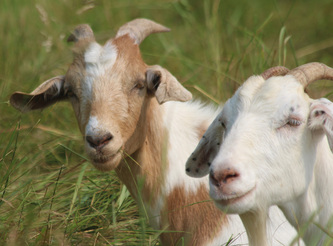
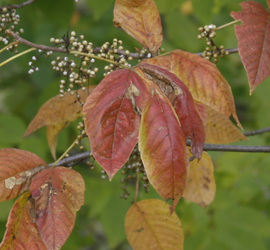
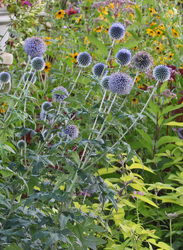
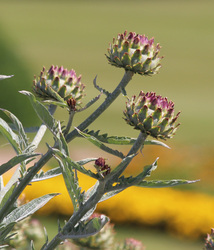
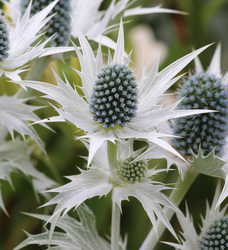
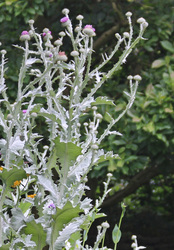
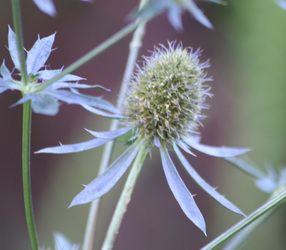
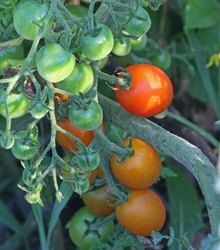
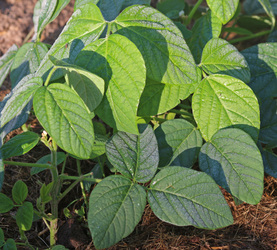
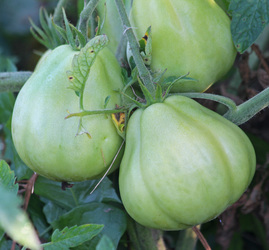
 RSS Feed
RSS Feed